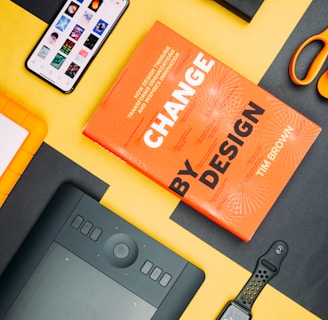Green Economy in Indonesia 2025: Positive Outlook
MARKETING
Muhammad Rizqi Perdana
5/23/20254 min read
Indonesia, as the world’s fourth most populous nation and the largest economy in Southeast Asia, faces the dual challenge of sustaining economic growth while addressing serious environmental concerns. Rapid urbanization, industrialization, and deforestation have led to high carbon emissions, environmental degradation, and biodiversity loss. In response, Indonesia has embraced the concept of a green economy, a development model that promotes economic growth while ensuring environmental sustainability and social equity.
Indonesia’s green economy concept was adopted from the United Nations Environment Programme’s green economy definition of an economic development model to support sustainable development with a focus on investment, capital, infrastructure, employment and skills to achieve social welfare and environmental sustainability. As Indonesia approaches the midpoint of its journey toward the "Golden Indonesia 2045" vision, the nation's commitment to a green economy in 2025 stands as a pivotal element in achieving sustainable and inclusive development.


Indonesia’s green economy transformation emphasizes a low carbon economy and circular economy, blue economy, and energy transition. The green economy sectors in Indonesia can be grouped into five clusters:
Energy and extractives (oil and gas, mining, and renewable power generation sectors);
Manufacturing (production and processing industries, clean technologies, and waste recycling sectors);
Connectivity (telecommunications, land and sea transport, infrastructure, and construction sectors);
Renewable natural resources (forestry, agriculture, land use activities, marine activities, and fisheries sectors);
Emerging natural capital markets (carbon market, ecotourism, biotechnology, and finance sectors).


Low Carbon Development
Indonesia is shifting from fossil fuel dependency to renewable energy sources such as solar, hydro, geothermal, and wind. The goal is to reduce greenhouse gas emissions and meet net-zero targets by 2060 or earlier.
Sustainable Use of Natural Resources
The green economy emphasizes the responsible management of forests, oceans, and biodiversity. This includes reforestation programs, sustainable agriculture, and conservation of marine ecosystems.Circular Economy Practices
Reducing waste and promoting recycling and reuse are central to Indonesia’s green economy agenda. The government supports industries and communities in transitioning to more resource-efficient models.Green Jobs and Inclusive Growth
A green economy creates employment in renewable energy, sustainable farming, waste management, and eco-tourism, aiming to improve livelihoods without harming the environment.Environmental Policy and Investment
Indonesia is implementing green fiscal policies such as carbon pricing, green bonds, and tax incentives to encourage sustainable investment and discourage environmentally harmful practices.
Key Features of Indonesia’s Green Economy
Renewable Energy Expansion: Indonesia aims to increase the share of renewable energy in its national energy mix to 23% by 2025. However, as of late 2024, the actual share stood at approximately 12%, indicating challenges in meeting this target.
Just Energy Transition Partnership (JETP): In collaboration with G7 countries, Indonesia launched the JETP, securing $20 billion to support the transition from coal to renewable energy sources. The initiative aims to peak greenhouse gas emissions from the power sector by 2030 and achieve net-zero emissions by 2050.
Green Economy Sectors: Indonesia's green economy encompasses various sectors, including renewable energy, sustainable agriculture, waste management, and eco-tourism. The government is promoting investments in these areas to drive sustainable growth.
Economic and Employment Impact: Transitioning to a green economy is projected to boost Indonesia's GDP growth to an average of 6.1–6.5% annually until 2050. Additionally, it could create up to 1.8 million green jobs by 2030, contributing to poverty reduction and economic resilience.
Key Developments in Indonesia's Green Economy
Coal Dependency: Despite efforts to reduce reliance on coal, it remains a significant energy source, accounting for a substantial portion of electricity generation. Phasing out coal requires substantial investment and policy reforms.
Financing Needs: Achieving renewable energy targets necessitates significant investment, estimated at $154 billion, highlighting the need for increased funding and international support.
Regulatory Hurdles: Inconsistent policies and regulatory barriers deter private investment in renewable energy projects. Streamlining regulations is essential to attract investors and accelerate the energy transition.
Indonesia’s Green Economy Challenges Ahead:
Indonesia’s green economy represents a crucial shift toward a more sustainable and equitable development model. With strong policy support, international collaboration, and active participation from all sectors of society, Indonesia has the potential to lead the green transformation in Southeast Asia. As the country strives to meet its climate targets and sustainable development goals, the green economy offers a promising path toward long-term prosperity that respects both people and the planet.
If your company need from professional regarding market research, marketing strategy, go-to-market strategy, or anything that related to your business, you can contact us through this link












Other Insights
Our showcase of work, research, and thoughts about business strategy, industry trends, marketing, organization, that helps you a step ahead from your competitors.
Branding is more than color—it's about desire and experience
It's about how capturing the consumer's desire and crafted experience that they craved.
Branding
Turning Urban Needs into Winning Product Ideas
E-Commerce
The competition is getting tighter than before, but there is still an opportunity to seize.
Electronic Appliances
A Guide on How To Build E-Commerce Business in 2025
As the number of urban citizen increases, being able to gather their needs and turning them into product ideas is essential.
Agriculture
Skincare
Business Strategy
It's about how capturing the consumer's desire and crafted experience that they craved.
5 Thing You Should Know About Agriculture Business
Skincare Ingredients Trends in Indonesia: 2025
Pricing Strategies and Models
Ingredients that are trending and can be utilized for product development for your skincare brand line.
Find out the type of pricing model that aligns with your business goals.
Ready to talk?
We’re eager to hear from you! Please fill out the form below and let us know how we can assist you.
